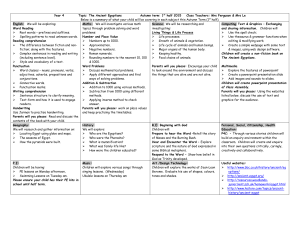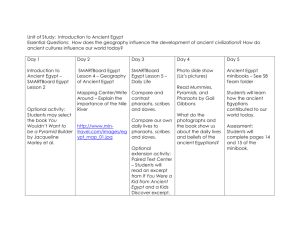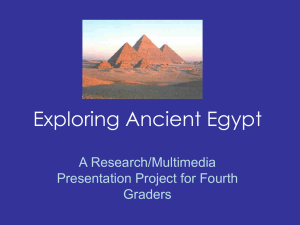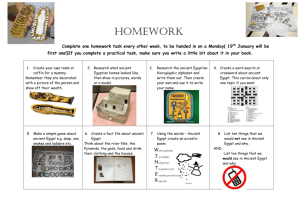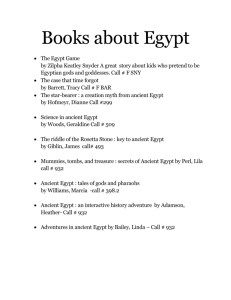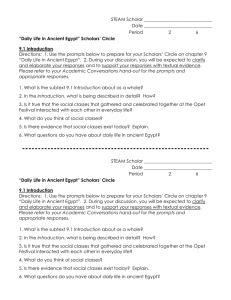Egypt Lesson 5 -
advertisement
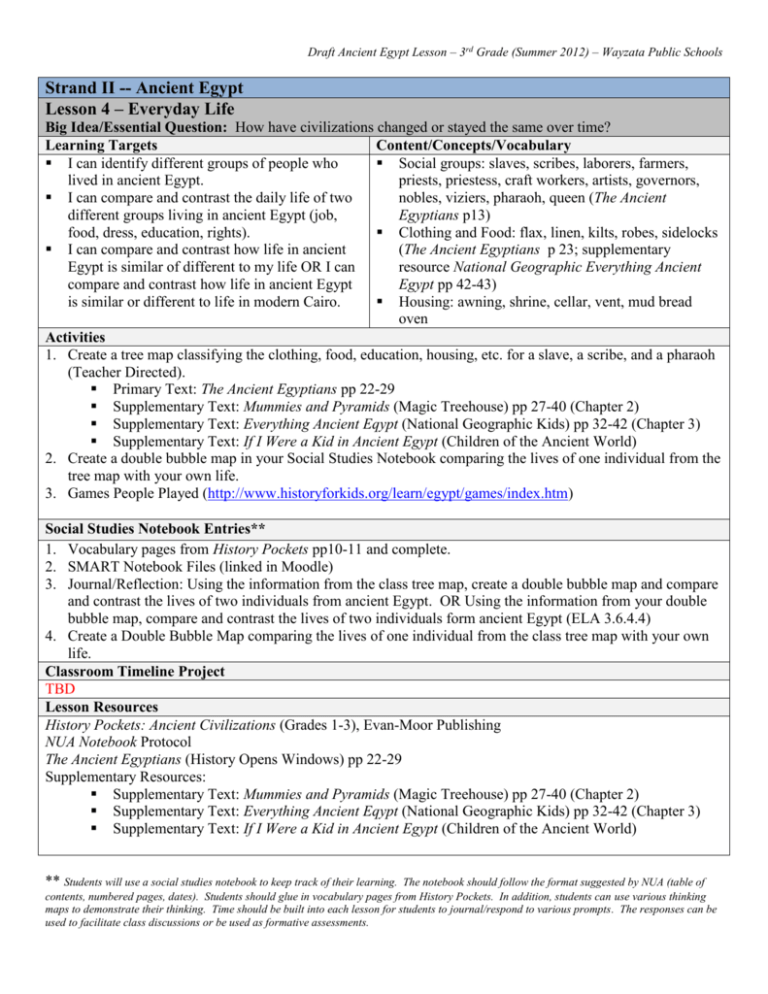
Draft Ancient Egypt Lesson – 3rd Grade (Summer 2012) – Wayzata Public Schools Strand II -- Ancient Egypt Lesson 4 – Everyday Life Big Idea/Essential Question: How have civilizations changed or stayed the same over time? Learning Targets Content/Concepts/Vocabulary I can identify different groups of people who Social groups: slaves, scribes, laborers, farmers, lived in ancient Egypt. priests, priestess, craft workers, artists, governors, I can compare and contrast the daily life of two nobles, viziers, pharaoh, queen (The Ancient different groups living in ancient Egypt (job, Egyptians p13) food, dress, education, rights). Clothing and Food: flax, linen, kilts, robes, sidelocks I can compare and contrast how life in ancient (The Ancient Egyptians p 23; supplementary Egypt is similar of different to my life OR I can resource National Geographic Everything Ancient compare and contrast how life in ancient Egypt Egypt pp 42-43) is similar or different to life in modern Cairo. Housing: awning, shrine, cellar, vent, mud bread oven Activities 1. Create a tree map classifying the clothing, food, education, housing, etc. for a slave, a scribe, and a pharaoh (Teacher Directed). Primary Text: The Ancient Egyptians pp 22-29 Supplementary Text: Mummies and Pyramids (Magic Treehouse) pp 27-40 (Chapter 2) Supplementary Text: Everything Ancient Eqypt (National Geographic Kids) pp 32-42 (Chapter 3) Supplementary Text: If I Were a Kid in Ancient Egypt (Children of the Ancient World) 2. Create a double bubble map in your Social Studies Notebook comparing the lives of one individual from the tree map with your own life. 3. Games People Played (http://www.historyforkids.org/learn/egypt/games/index.htm) Social Studies Notebook Entries** 1. Vocabulary pages from History Pockets pp10-11 and complete. 2. SMART Notebook Files (linked in Moodle) 3. Journal/Reflection: Using the information from the class tree map, create a double bubble map and compare and contrast the lives of two individuals from ancient Egypt. OR Using the information from your double bubble map, compare and contrast the lives of two individuals form ancient Egypt (ELA 3.6.4.4) 4. Create a Double Bubble Map comparing the lives of one individual from the class tree map with your own life. Classroom Timeline Project TBD Lesson Resources History Pockets: Ancient Civilizations (Grades 1-3), Evan-Moor Publishing NUA Notebook Protocol The Ancient Egyptians (History Opens Windows) pp 22-29 Supplementary Resources: Supplementary Text: Mummies and Pyramids (Magic Treehouse) pp 27-40 (Chapter 2) Supplementary Text: Everything Ancient Eqypt (National Geographic Kids) pp 32-42 (Chapter 3) Supplementary Text: If I Were a Kid in Ancient Egypt (Children of the Ancient World) ** Students will use a social studies notebook to keep track of their learning. The notebook should follow the format suggested by NUA (table of contents, numbered pages, dates). Students should glue in vocabulary pages from History Pockets. In addition, students can use various thinking maps to demonstrate their thinking. Time should be built into each lesson for students to journal/respond to various prompts. The responses can be used to facilitate class discussions or be used as formative assessments.

